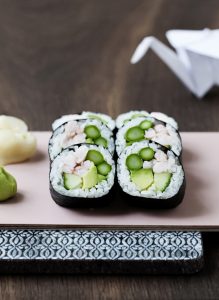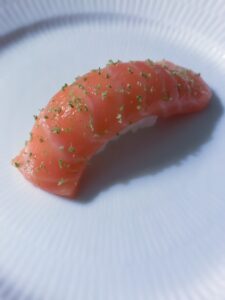
Japanese sushi restaurants in Tokyo change the menu more often than in Europe.Often the menu will consist of 13-15 different seafood. Some fish such as salmon and scallops can be found year-round on the menu.
There will typically be 3-5 fish on the mennu that follow the season for fish. Some fish are caught in the spring when they are going to spawn, while other fish are to be caught in the summer. It depends on the species of fish.
A fish like tuna is also popular in Japan.
Often a sushi restaurant will have 3 different kinds of tuna on the menu. It will often be tuna of different qualities, one will be lean tuna, another will fat tuna and the more exclusive restaurants have a tuna on the menu, which is matured just like beef. Tuna can be matured for several weeks just like beef.
Some sushi restaurants have the fish of the day on the menu. There it is up to the sushi chef what can be bought of fish on the fishing market in the early morning hours.
In Japan, it is an exciting experience to go out and eat, since you do not always know what fish are on the menu.
Read more about Sushi course for beginners
_
Zoë has lectured and held sushi courses for A. P. Moller – Maersk, Hugo Boss Nordic, Novo Nordisk, Novartis, Velux, Gorrissen Federspiel, Beierholm revision, Elbek & Vejrup and many more.







